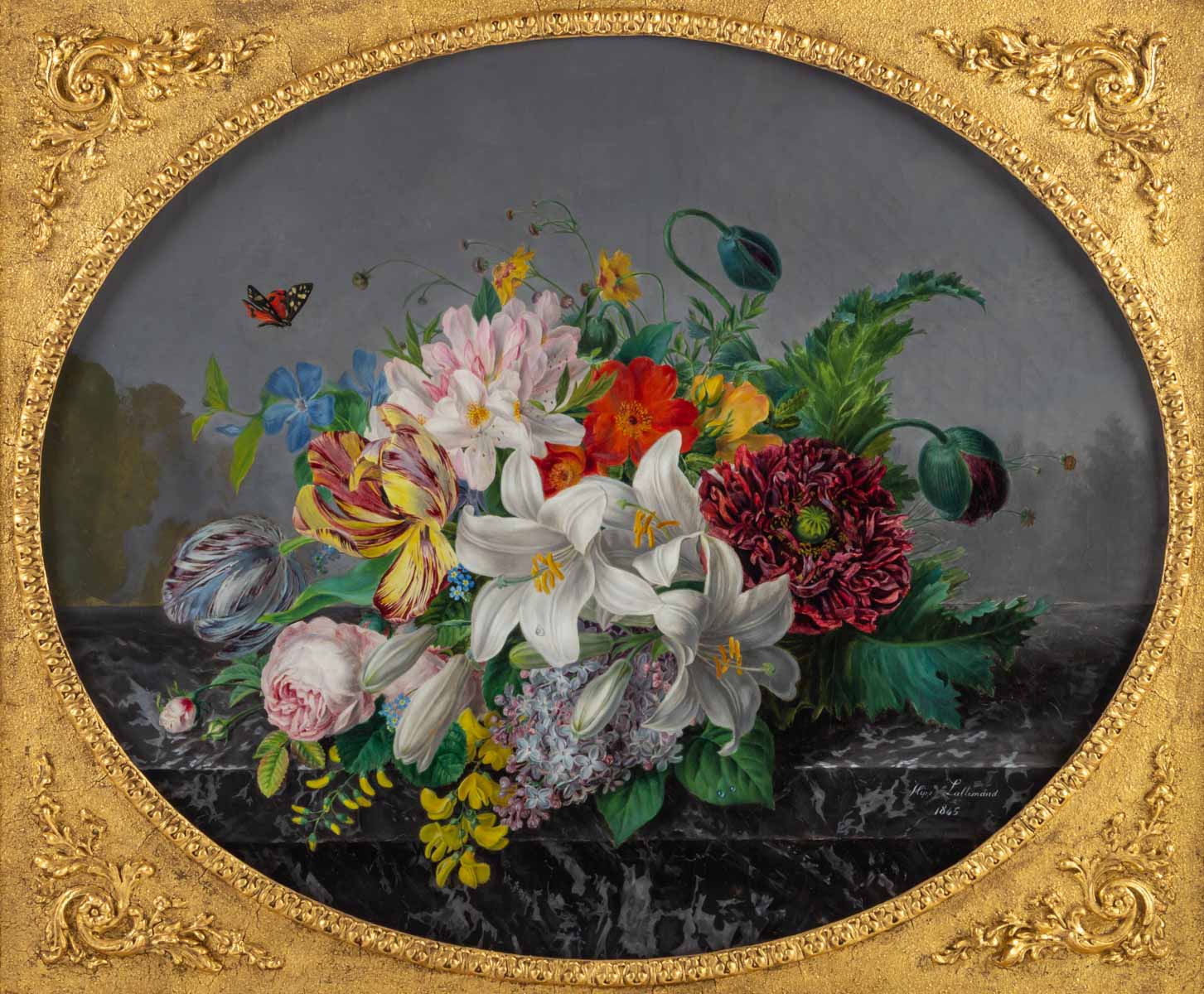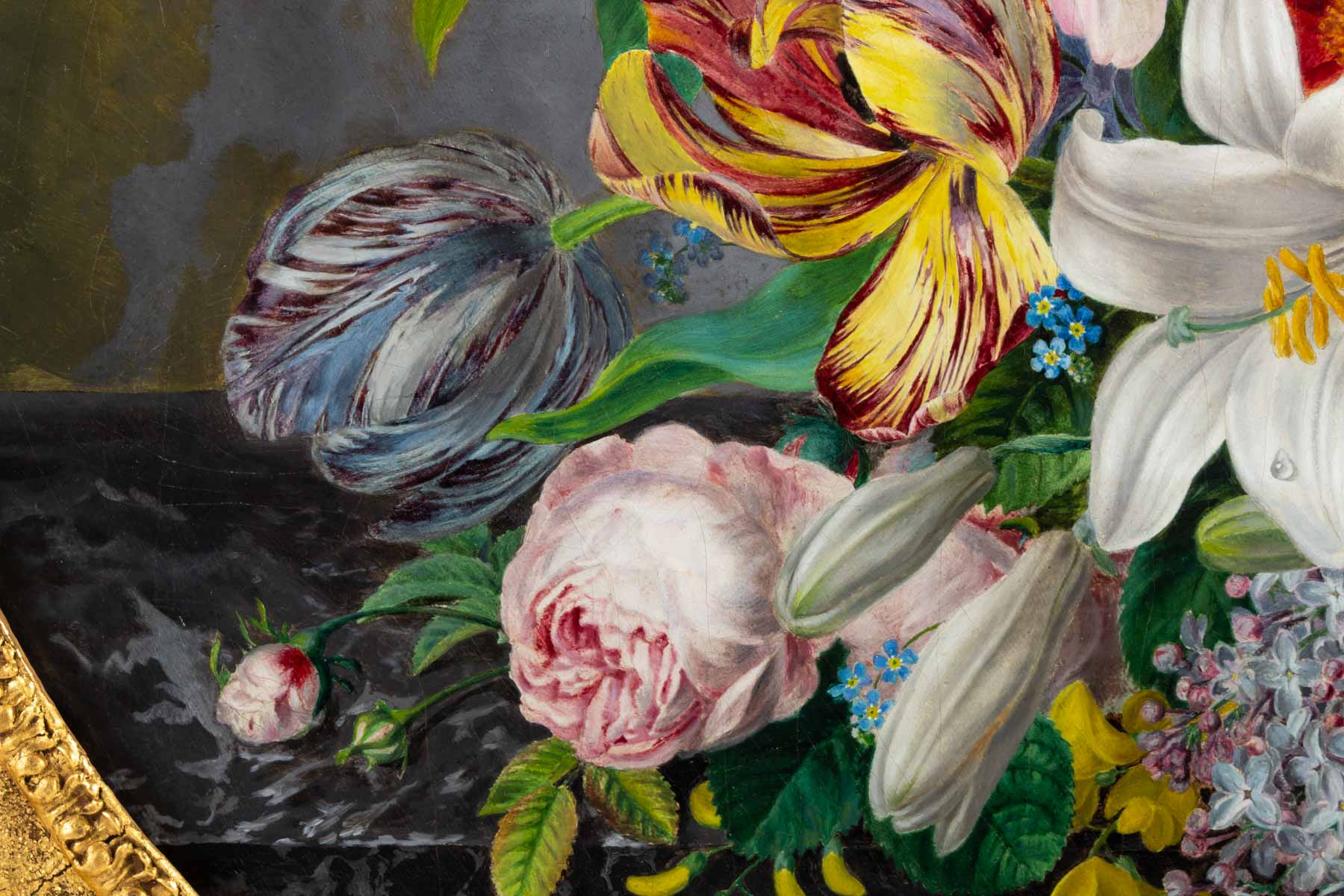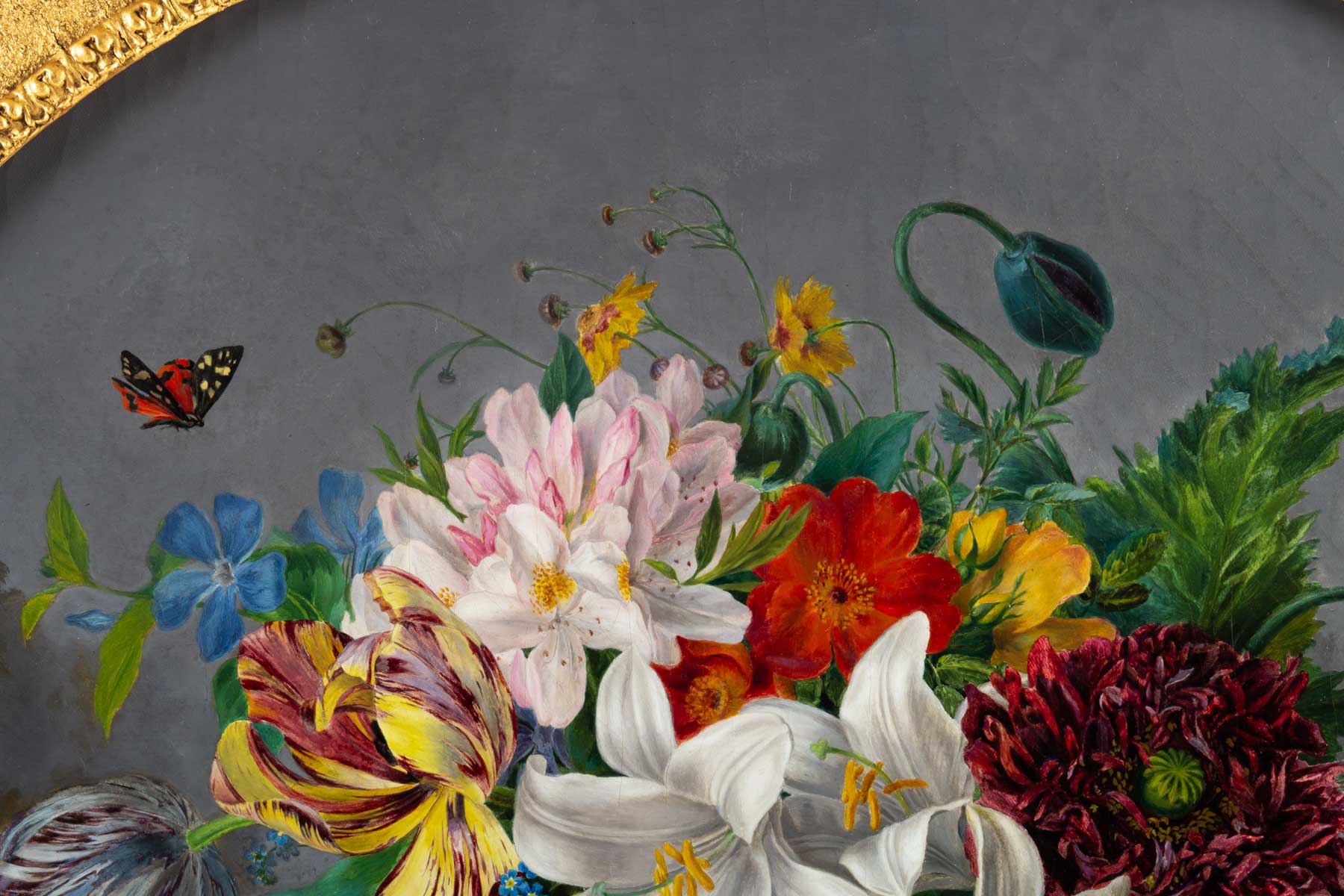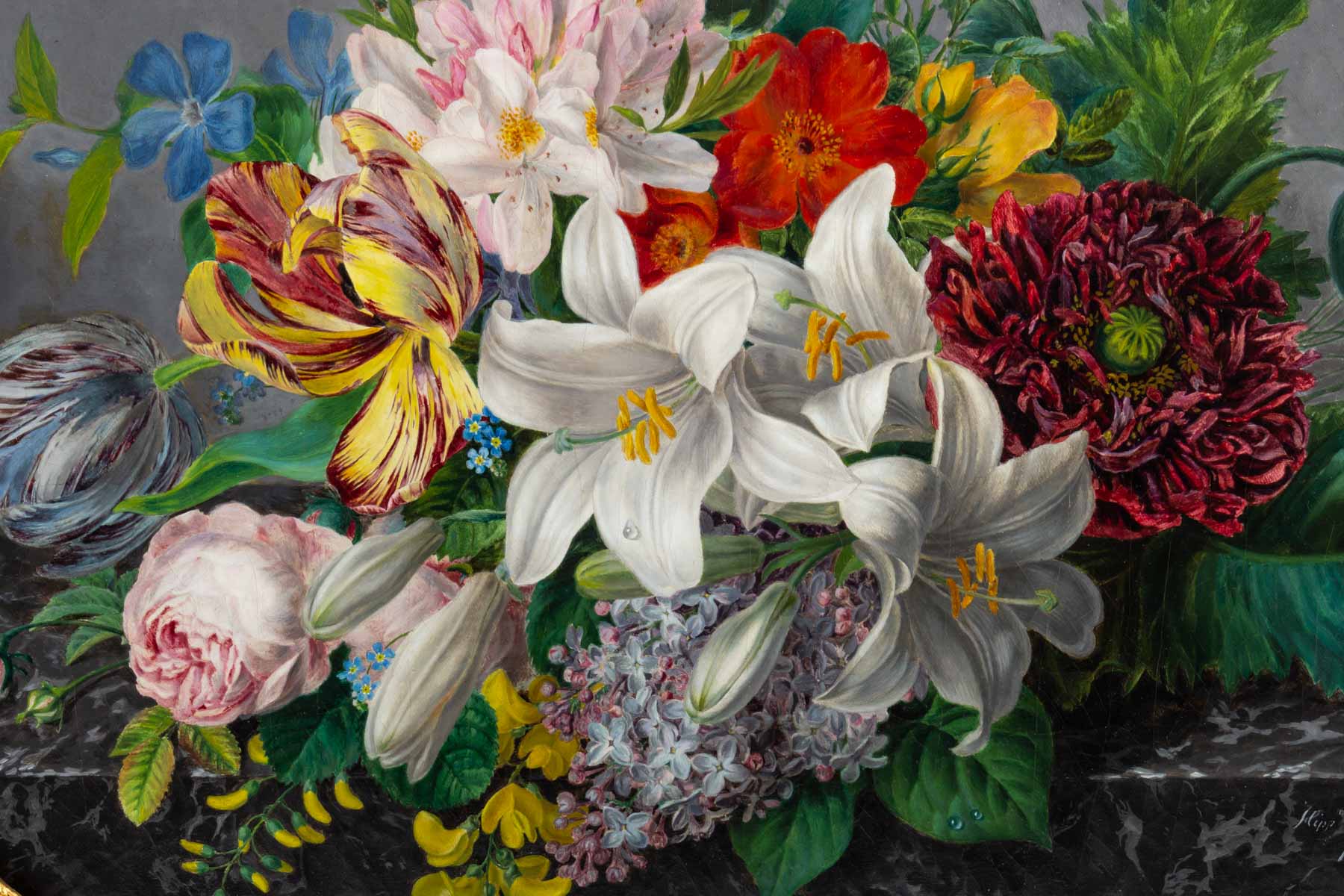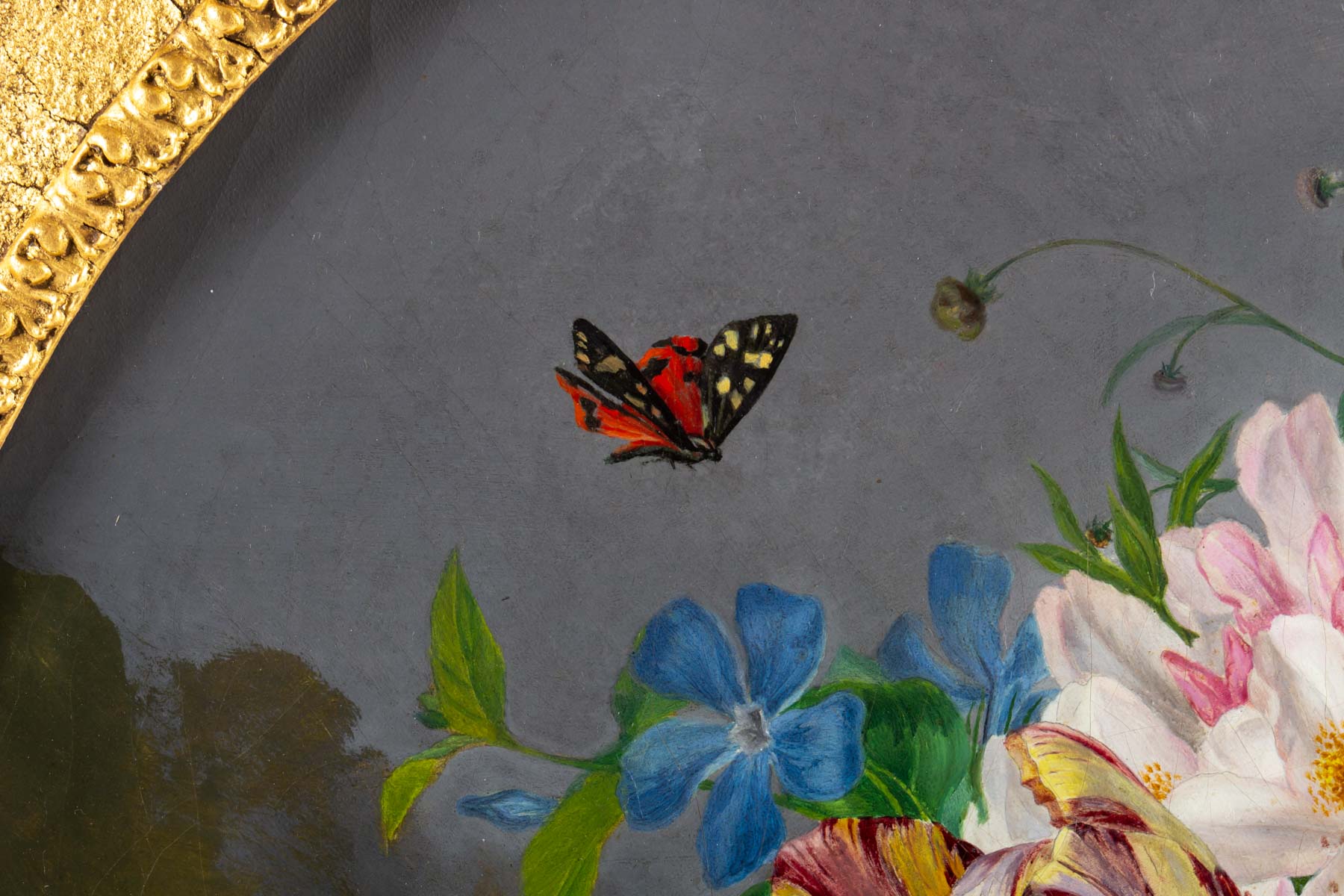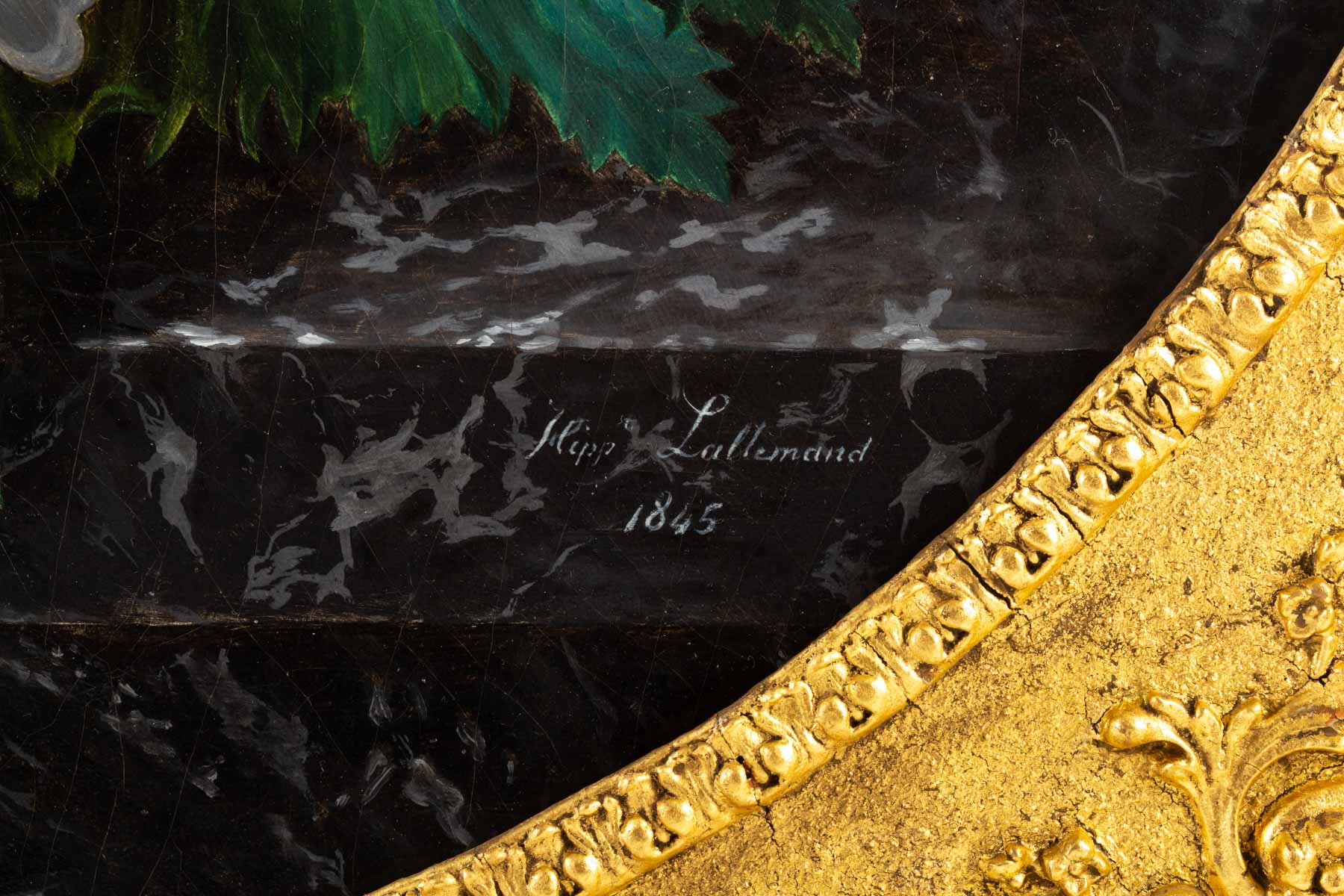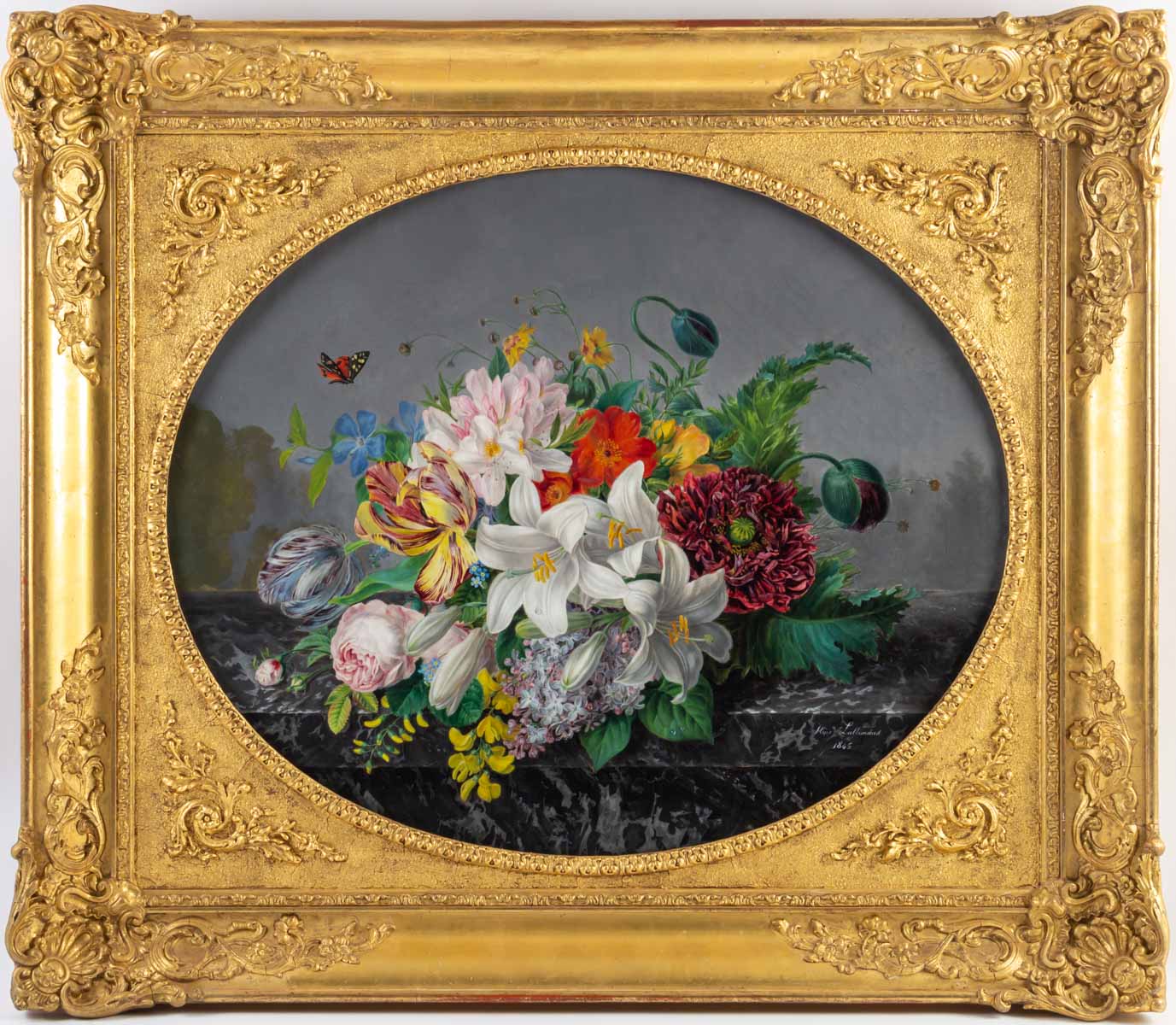Adele Hippolyte Lallemand
“Summer Flowers and Fruits”, 1845
Oil on canvas
Signed and dated lower right
Dimensions: 55 x 66cm
With frame: 73 x 84 cm
Price : 15 000 the pair
“Is it painted on porcelain or on paper? » in « Complete catalog of the 1846 salon annotated by A.-H. Delaunay, editor-in-chief of the Journal des Artistes”, Paris, Bureau du journal des Artistes, 1846.
Adèle Hippolyte Lallemand is a French artist born in Paris. She lives and trains in the capital. A student of Belloc, she specialized in still life painting. She is dedicated to the accurate and faithful representation of things in nature.
Seasonal flowers and fruits are painted in watercolor and oil on canvas. Apart from the floral art in which she excels, we know of her a few portraits of relatives (“L’heureux du jour, Portrait de Mlle Éléonore N…”, 1845).
Lallemand exhibited regularly in the Parisian Salons from 1835 to 1870. His quality submissions are always acclaimed by critics. “Is it painted on porcelain or on paper? asks AH Delaunay, editor-in-chief of the Journal des Artistes, in 1846.
The still life is a genre of rare complexity. From the Italian Renaissance to the French academicism of the 17th century, the genre is little considered. In 1667, Félibien gave a lecture on the hierarchy of genres in painting at the Royal Academy of Painting and Sculpture.
He speaks of the still life as a pictorial sub-genre, a poor mental exercise compared to the intellectual solicitation that religious, mythological and historical painting entails.
Since the Renaissance, art, and in particular that of our artist, has lived on the legacy of Leonardo da Vinci: art is a “cosa mental”, or “thing of the mind”. It should tend to awaken our intellect and elevate our soul. It is in this perspective that the art of still life, receptacle of spirituality, develops in the Netherlands.
The Dutch Golden Age brings the genre of still life to its letters of nobility; Protestant Flanders is the setting for the success of the greatest painters. Each subgenre of still life has a name; from the representation of breakfast products to that of luxurious dishes exported from the colonies.
Adèle Hippolyte Lallemand immerses herself in the Flemish heritage and plays with the codes of academic representation. The bouquets are skilfully arranged and disturbed. The fruits and flowers are organized on the canvas so that the viewer’s eye can grasp it in all its clarity.
The bright colors and the attention paid to their harmony are subordinated to the law of the artist’s drawing. His gaze is precise, his hand solid, his brush of great finesse.
The artist’s witticism consists in animating the still life with flying insects. For the Italian Renaissance, the fly, the bee and the butterfly have a very strong symbolism. Placed on the lips or the face of a man, it represents the genius, placed on a flower, it represents its ephemeral condition and, by extension, the human condition of the spectator.
Bibliography:
• Bénézit, Elisabeth Hardouin Fugier, “Painters Still Lifes in France”.
• The titles of the works are given in “Explanation of works of painting, architecture, engraving and lithography by living artists, exhibited at the royal museum, March 15, 1845”, Paris, Vinchon, 1845.

